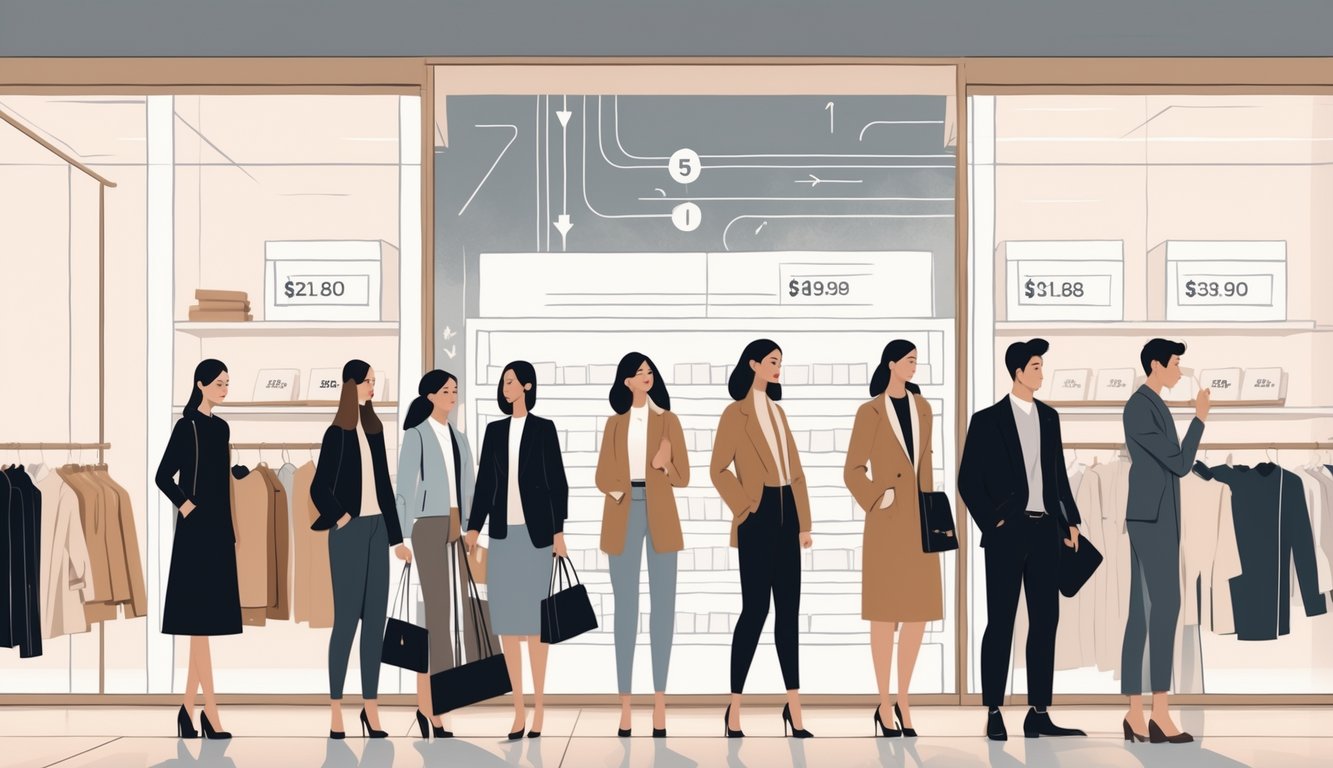
Okay, so, blink and suddenly that bag you’ve been eyeing costs more than your entire month’s rent. I swear, the way these luxury price jumps just zap crowds from boutiques—it’s wild. Like, 80% of growth? Poof, gone. Even the big names—Louis Vuitton, Burberry, Chanel—can’t hit their revenue goals this year. (Yeah, I checked the Bain report. I don’t even like Bain, but facts are facts.) Brands can whine about “supply chain chaos” all they want—lab shortages, materials, whatever. But at the last trade show, not a single person could explain why £900 loafers now cost £1,300. Unless, I don’t know, the tassels are handwoven by astronauts? (Spoiler: they’re not.)
Here’s what’s actually hilarious: nobody’s buying the “it’s more exclusive now” excuse. Since 2019, over 50 million people just noped right out of luxury brands. Growth projections? They’re crawling at 1-3%. YSL, Gucci, Hermès—obsessed with “rethinking supply chains” and dropping sustainability buzzwords, but my Gen Z clients just send me screenshots of hidden discounts and ask if “eco-friendly silk” even matters. If these brands had to survive in my WhatsApp group, where resale links outnumber full-price purchases by, like, 10 to 1, they’d fold in a week.
So, if “luxury” really means “we jacked up prices again,” maybe that’s why half my friends want vintage now. Sure, supply chain drama, geopolitics, sustainability, all that’s real. But who’s actually thrilled to pay more? If anyone can explain—without contradicting themselves—why “scarcity” means I can’t buy a normal trench coat without selling my car, please, enlighten me. Until then, I’ll just watch the luxury fashion slowdown like it’s some confusing reality show. Minus the good outfits.
Understanding Designer Price Hikes
Somewhere between chasing last season’s coat and arguing over receipts, it hit me: all this “luxury strategy” and “inflation-washed price points” talk isn’t just corporate noise. It actually messes with my shopping cart, starts fights in my group chats, and nobody agrees if it’s inflation, greed, or both. (Probably both. Definitely not fun.)
Factors Driving Price Increases
Honestly, it’s a mess. Some brands blame rising costs, some claim “scarcity” and “prestige,” then slap another $500 on the tag. I keep hearing the same stuff: raw materials are up (sure, leather’s not getting cheaper), shipping’s a nightmare, marketing budgets are out of control, and—this one kills me—executives just say “value perception is everything.” If you’ve tried to buy a Chanel 2.55 lately, hope you enjoy sticker shock.
LVMH, Burberry, all those guys, talk about “brand DNA.” Whatever that means. Then they double prices, even though everyone knows half the stuff’s outsourced. And it’s not just the fancy, limited-edition pieces. It’s the basic models too. One analyst told me, “Brands can only push so far before people stop showing up.” Guess what? Luxury consumer pullbacks are happening—tens of millions have checked out, literally.
The Impact of Inflation
Here’s the part that makes zero sense: inflation’s at, what, 3%? So why did my favorite bag jump 20%? The Daily Upside says some luxury price hikes hit 100% in four years. That’s not inflation, that’s just… something else. Sure, inflation gets blamed for logistics, wages, packaging, all that. (Apparently shiny boxes don’t make themselves.)
But luxury brands? They hide behind “exclusivity” and turn tiny cost increases into massive price jumps. Ask any real supply chain person—they’ll rant about exchange rates and import costs, especially in Europe. But nobody honest blames inflation for this much markup. Try asking a boutique staffer about it; they’ll just start reciting the “timeless investment” script like they’re hypnotized.
Changing Price Points in Luxury Goods
Let’s just say it: “entry” luxury prices are out of control. In 2019, a mid-level Saint Laurent bag was under $1,000; now it’s closing in on $1,700. And it’s not because of new features. Whole product lines—logo belts, sneakers, you name it—get huge hikes, and nobody can explain why.
Retailers quietly admit most of the so-called “market growth” from 2021 to 2023 came from price, not people actually buying more stuff. That’s not demand, that’s sticker shock. Even HSBC analysts said, “pricing was the main driver of sales growth between 2021-2023…” (Business of Fashion basically screamed it.) The gap between “accessible” and “aspirational” luxury? It’s not a gap anymore, it’s a canyon. Also: who decided crossbody straps are worth 40% more? I notice, trust me.
Profit Margins and Brand Strategies
I’ve sat through so many earnings calls (with way too much coffee), listening to execs drone on about “protecting margins.” LVMH, Kering, you name it, all obsessed with profit. And, surprise, 80% of recent industry growth came from raising prices, not better design or service. Profit margins soared, but innovation? Meh.
Brands are quietly tweaking their “access assortment,” ditching mini bags, searching for the next price sweet spot—while still insisting on “exclusivity.” Nobody I know buys that. We just wait for markdowns or ignore the new stuff. And “timeless investments”? If you’re scared to use it because it might lose value, what’s the point? All these strategies, not a lot of wins.
Supply Chain Disruptions in the Fashion Industry
Flights get canceled, containers sit in limbo, and suddenly my inbox is full of new price lists. Every week, sneaker and denim prices morph before the shipment even lands. Warehouse managers just shrug—like, “Yeah, same complaints, different day.” Figuring out which delays are real and which are just brands covering themselves? Good luck. Everyone’s got a chart, but nobody agrees.
Global Supply Chain Challenges
Shipments get rerouted halfway across the ocean, logistics teams panic at midnight, and somehow there’s never enough of anything. The 2025 forecast? Supply chains are a mess: bottlenecks from geopolitics, container shortages, and freight quotes that make last year look like a joke. The BoF-McKinsey survey? Apparently, 345 execs admit the pressure’s insane just to keep shelves stocked.
One factory closes for a week and suddenly everything’s off. European brands drown in customs delays, US retailers scramble to source new suppliers overnight. The weirdest part? When upstream chaos hits Nordstrom’s price tags months later and everyone acts shocked. The Cooperative Logistics Network says execs now re-evaluate suppliers every quarter, just to avoid getting wrecked by some border closure they can’t even pronounce.



